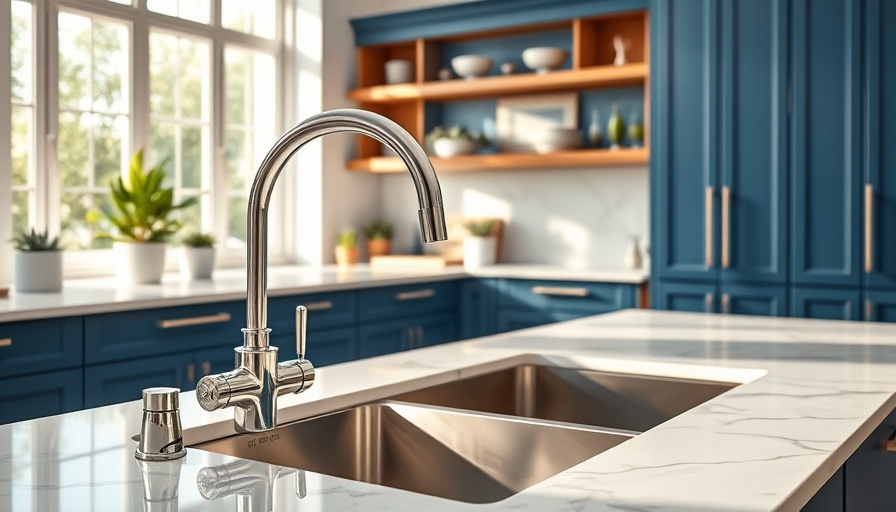
The Mysterious Dome: What’s That Thing Next to My Faucet?
If you’ve ever wondered about the peculiar dome-shaped gizmo next to your kitchen faucet, you’re not alone. Many homeowners, especially those in Southeast Michigan, dismiss it as a quirky design choice. However, this small but important addition to your sink is crucial for your dishwasher’s drainage—its official name is an air gap.
Air Gap Uncovered: The Basic Purpose
An air gap is more than just a curious kitchen fixture; it plays a vital role in ensuring your kitchen remains clean and functional. According to California-based plumber Alex Atkinson, the air gap creates a safe physical break between your dishwasher and the drain. Its two main functions include helping push out the water from your dishwasher and preventing dirty water from your sink from flowing back into it, especially during clogs.
How It Works: The Science Behind the Air Gap
When the dishwasher operates, it pumps out water through a hose that connects under your sink to the kitchen drain. The air gap creates a necessary loop that allows the pressurized water to move freely, while simultaneously preventing backflow. If your sink experiences a clog, the air gap ensures that water spills out onto your countertop instead of contaminating your dishes—what a relief!
Practical Tips for Homeowners: Do You Need an Air Gap?
The necessity of an air gap can vary based on local building codes. As home repair expert Kevin Crawford explains, some areas in the United States mandate air gaps for dishwasher installations, while others do not. For homeowners in Southeast Michigan, it's essential to check local regulations, especially if you are installing or remodeling your kitchen.
Solutions for Common Issues: Keeping Your Air Gap Functional
Just like any kitchen component, air gaps require attention and maintenance. Here are a few DIY tips to keep your air gap performing optimally:
- Regular Checks: Periodically inspect the air gap for clogs, especially after heavy use, such as during holiday meals.
- Cleanliness: Ensure that the area around the air gap is clean. Food debris can cause blockages and odors.
- Professional Help: If you notice constant backflow, it may indicate a more significant plumbing issue, at which point hiring a professional could be beneficial.
Final Thoughts: Understanding Your Kitchen's Design
Understanding the purpose and function of the air gap can turn confusion into confidence. Whether you’re a DIY enthusiast or someone who prefers to call in the pros, knowing what that dome does can help you manage your home improvement projects with greater clarity. As homeowners, it’s essential to embrace the technology that supports our everyday conveniences, and the air gap is a perfect example.
So next time you glance over at that curious air gap, remember its significant role in your kitchen! If you ever find yourself in doubt, don’t hesitate to seek out professional advice when it comes to keeping your home and appliances in top shape.
 Add Row
Add Row  Add
Add 




Write A Comment